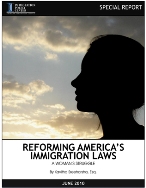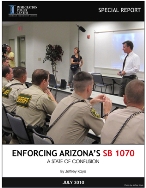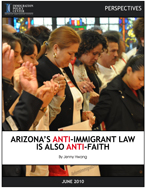 By Kavitha Sreeharsha
By Kavitha Sreeharsha
While immigrant communities across the nation endure the long wait for immigration reform, there are roughly 19 million immigrant women and girls currently in the U.S. Immigrant women, particularly the undocumented, are often more vulnerable than their male counterparts, lack the same economic opportunities, and experience exploitation while crossing the border, while working and even in their own homes. In short, immigrant women have become the silent victims of a broken immigration system.
In this IPC report, immigration attorney Kavitha Sreeharsha lays out the economic and social disparities, legal barriers to current immigration law and the many dangers hard-working immigrant women are forced to endure.
The report also explores how women are distinctly harmed by heightened enforcement of immigration laws. Abusers, traffickers, and exploitative employers keep immigrant women from seeking local law-enforcement protection by convincing them that police officers are working in partnership with DHS and will deport victims instead of protecting them. Essentially, these enforcement measures increase the likelihood of abuse and assault against immigrant women by cutting them off from help and giving their perpetrators a powerful tool to silence their victims and escape prosecution.
Ultimately, the author concludes, only through a comprehensive immigration reform package—one that includes a path to legalization that values the contributions immigrant woman make as mothers, wives and workers—can the U.S. reconcile these disparities.
Published On: Mon, Jun 28, 2010 | Download File






